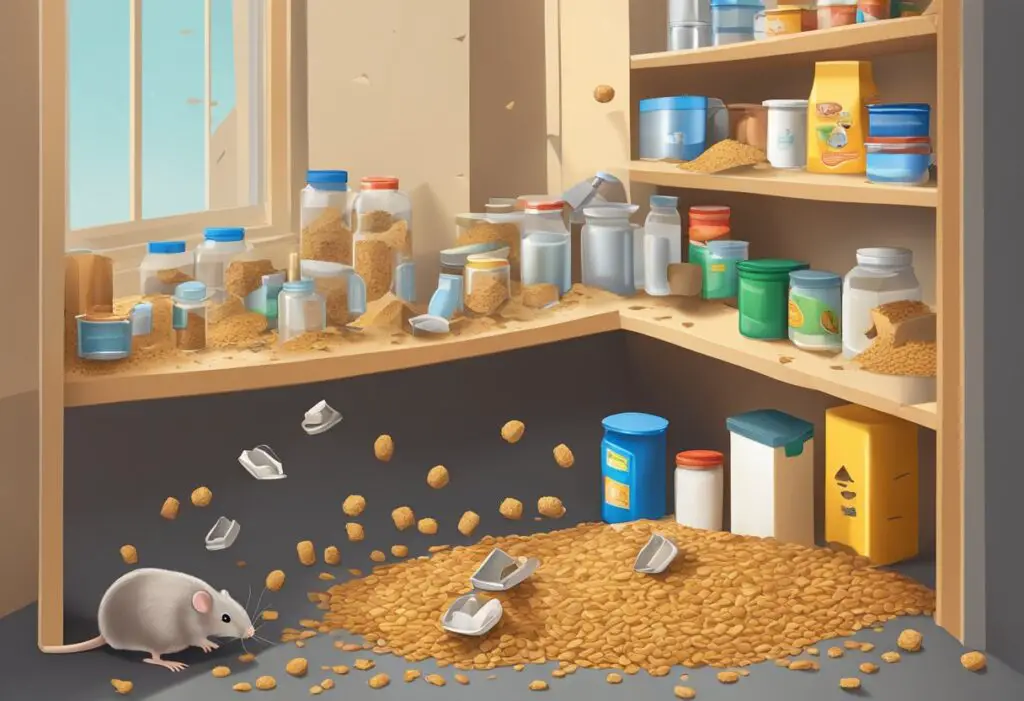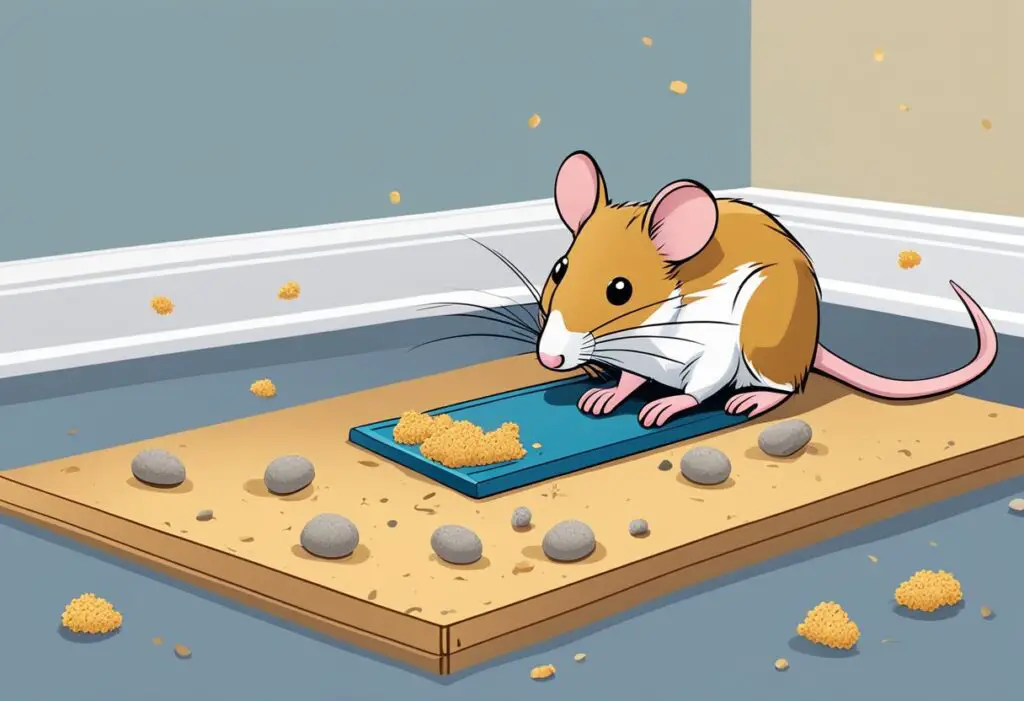If you’ve ever set a mouse trap only to find it missing later, you’re not alone. Many people experience the mystery of disappearing traps, which can be frustrating when you’re trying to tackle a mouse problem. Mouse traps often disappear because mice may drag them away after triggering them or because they are not securely placed.

Understanding why this happens can be essential for effective pest control. You might be inadvertently setting yourself up for failure if your traps are in vulnerable locations. By ensuring your traps are secure and in high-traffic areas, you can enhance your chances of catching those pesky invaders.
In this article, you’ll discover practical tips and solutions to prevent your traps from disappearing. With the right approach, you can stay one step ahead in the battle against mice and regain control over your space.
Understanding Mouse Behavior
To effectively manage mouse traps, it’s essential to understand how mice behave. Awareness of their entry points and signs of their presence can help you set up traps more strategically and maintain a rodent-free environment.
Common Entry Points
Mice can sneak into your home through surprisingly small openings. Look for gaps around doors and windows, especially if they’re not sealed properly.
Other common entry points include:
- Foundation Cracks: Small cracks in your foundation can allow mice to enter.
- Vents: Exhaust or ventilation vents can serve as access routes if they aren’t covered.
- Plumbing Openings: Gaps around pipes often go unnoticed but can be a gateway for mice.
To prevent mice from entering, ensure all entry points are sealed. Use caulk or weather-stripping to close gaps and consider installing mesh screens over vents.
Signs of Mouse Presence
Identifying mouse activity early can save you from a larger infestation. Keep an eye out for common signs that indicate their presence:
- Droppings: Small, dark pellets near food sources or corners.
- Gnaw Marks: Evidence of biting on food packaging, furniture, or baseboards.
- Nesting Materials: Shredded paper, fabric, or insulation could signal nesting.
Additionally, listen for sounds of scurrying or scratching, particularly at night. Early detection is vital. Once you recognize these signs, you can effectively position your traps for maximum effectiveness.
Selection and Placement of Traps

Selecting the right traps and properly placing them plays a key role in effectively managing a mouse problem. Understanding the types of traps available and how to use them can make a significant difference in your success.
Choosing the Right Trap
When selecting a trap, consider the specific needs of your situation. Common options include snap traps, glue traps, live traps, and electronic traps.
- Snap traps offer quick results as they kill mice instantly.
- Glue traps capture mice by sticking them to a surface. However, they can be inhumane.
- Live traps allow for catch-and-release but require checking frequently to avoid distress.
- Electronic traps kill mice with a high-voltage shock and are reusable.
Assess the level of infestation and your comfort with each option to make an informed choice.
Effective Baiting Techniques
Your bait choice is crucial to attracting mice effectively. Some recommended baits include peanut butter, sunflower seeds, and chocolate.
- Use a small amount to avoid wasting bait or making it easy for mice to access without triggering the trap.
- Mix dry and wet baits to see which works best in your case.
Place bait in the trap’s sensitive area where the mouse is most likely to trigger the mechanism. This step is essential for effective catch rates.
Strategic Placement
Placing traps in the right locations maximizes their effectiveness. Mice tend to travel along walls and in hidden areas.
- Target locations such as corners, behind appliances, or under furniture.
- Ensure that traps are placed in areas with signs of activity like droppings or gnaw marks.
Remember to keep traps out of reach of pets and children to maintain safety while effectively managing your rodent problem.
Securing the Traps
To prevent your traps from disappearing or being moved, securing them is key.
- Use double-sided tape or adhesive strips to hold the trap in place.
- Consider tying traps to heavier objects to ensure they remain stationary.
This careful placement not only helps in avoiding disappearance but also increases the likelihood of successful captures. Secure traps yield better results and reduce frustration in your mouse control efforts.
Dealing With Larger Pests

When you encounter larger pests, the approach may differ significantly from dealing with typical mice. Understanding the behavior and control methods for these animals is essential.
Rodent Control Beyond Mice
Rats and squirrels often invade spaces looking for food and shelter. Unlike mice, these larger rodents are more cautious and can be more difficult to catch.
To manage these pests effectively, consider using traps specifically designed for rats. Snap traps are effective, but be mindful of placement, as rats tend to follow walls and can be cautious of new objects in their environment.
You may also want to explore bait stations. These can attract rats while keeping pets and children safe. It’s beneficial to use them strategically around your property, focusing on areas where you’ve noticed signs of activity.
Preventative Measures for Larger Animals
Preventing larger animals from entering your home is crucial. Start by sealing up entry points. Rats can enter through holes as small as half an inch. Use steel wool or concrete to block these gaps in your walls, foundations, and around utilities.
It’s helpful to maintain your yard by trimming bushes and trees. This removes hiding spots and discourages squirrels from nesting close to your home. Additionally, ensure that food sources, like garbage or pet food, are secured in airtight containers.
Encouraging natural predators can also be beneficial. Birds of prey and neighborhood cats can help keep the rodent population in check. Consider installing birdhouses or providing a safe habitat for these natural hunters to thrive.
Additional Considerations in Pest Control
When addressing pest control, it’s essential to consider factors beyond just rodent issues. Understanding the broader pest landscape and knowing when to seek professional help can significantly enhance your efforts.
Non-Rodent Intruders
You may notice that pests like ants or cockroaches can also disrupt your home. These intruders can cause damage and spread bacteria.
To manage these pests effectively:
Identify: Recognize which pests are in your home. Ants often travel in lines, while cockroaches may hide in dark, damp areas.
Seal Entry Points: Block any gaps or cracks in walls and doors to prevent their entry.
Maintain Cleanliness: Ensure food is stored properly and surfaces are kept clean to deter pests from taking up residence in your home.
Use Traps: Similar to mouse traps, there are specific traps for ants and cockroaches available.
By being proactive, you can stop non-rodent pests from becoming a bigger issue.
Professionals and Expertise
Sometimes DIY methods aren’t enough, and seeking a pest control professional can be beneficial. These experts bring specific knowledge and tools to tackle infestations effectively.
When considering professional help:
Assessment: A pest control professional conducts a thorough assessment of your home, identifying pest types and their entry points.
Customized Solutions: They develop tailored treatments that fit your specific situation, ensuring effective results.
Long-Term Prevention: They can provide advice and strategies for long-term pest prevention, not just for rodents but for all types of pests.
If you’re finding persistent issues with ants, cockroaches, or any other pests, consulting with an expert can lead to more effective resolutions.
Maintaining a Mouse-Free Home

Creating a mouse-free home involves adopting preventive measures as well as addressing long-term solutions. By focusing on specific strategies, you can significantly reduce the chances of a mouse infestation.
Preventive Tips and Tricks
To keep mice at bay, start by sealing entry points around your home. Inspect door frames, windows, and any cracks in your walls. Use steel wool to block holes, as it’s tough and discourages mice from gnawing through.
Store food in airtight containers to eliminate easy access to snacks. This includes pet food, which should also be kept sealed. Maintain a tidy kitchen, regularly cleaning up crumbs and spills.
Avoid clutter, especially in basements and attics, as these can serve as nesting materials for mice. Keeping your home organized makes it less appealing to rodents.
Long-Term Solutions
Consider implementing long-term solutions to ensure lasting protection. Invest in traps that are strategically placed in areas where mouse activity is common, such as along walls or in corners.
Regular maintenance is crucial. Perform seasonal inspections to check for new entry points or signs of mice.
If you’re dealing with a persistent issue, think about professional pest control services. They can provide insights and treatments tailored to your home’s needs, ensuring that your living space remains rodent-free for the long haul.








